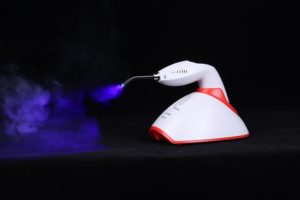5 Groundbreaking Technologies In Dental Care
 The future of dentistry is revolutionary. It’s a world where you can get your teeth whitened in under an hour. Where implants are so advanced that they grow into your jawbone, indistinguishable from natural teeth. And where 3D printers will create bespoke dental devices for every patient on Earth in just 24 hours!
The future of dentistry is revolutionary. It’s a world where you can get your teeth whitened in under an hour. Where implants are so advanced that they grow into your jawbone, indistinguishable from natural teeth. And where 3D printers will create bespoke dental devices for every patient on Earth in just 24 hours!
But what does it all mean? What will this new era of dentistry mean for us as individuals? How will it change how we interact with our dentists? This article explores five groundbreaking technologies in the field of dental care which could help answer these questions.
Artificial Intelligence
In the past, dentists relied on measurements of teeth gap, gingival display, and tooth mobility to determine whether there were any issues with teeth. AI is now making this process much quicker and more accurate. AI can detect cavities in seconds by analyzing a 3D scan of the patient’s mouth. This type of efficiency is unheard of in conventional methods; it could save up to three years’ worth of time that dentists would otherwise spend diagnosing cavities.
If you search for emergency dental Washington, you will notice that many dentists have now adopted the use of AI in their practice. But Artificial Intelligence will be invaluable as a resource for many other dentists and dental assistants. AI could also help ensure the quality of work and reduce time spent on mundane tasks like scheduling appointments and filling out forms while giving dentists more time to focus on the human interaction part of the job.
Augmented Reality
Augmented Reality opens a whole new world of possibilities for dentists, allowing them to see a patient’s teeth in detail. This technology is made possible by embedding the live video feed into a computer-generated 3D environment. The dentist can then use interactive features to zoom in on particular spots or show the patient what they would look like with an implant. Through augmented reality, patients are no longer limited to just seeing their teeth as if they were looking in a mirror; they now have the ability to see and interact with what their teeth will look like after surgery.
Augmented Reality also has benefits for patients who are too anxious to visit the dentist themselves. Rather than undergoing treatment, patients can feel less anxious by going through cognitive behavioral therapy.
3D Printing
Recent innovations in dental care have made amazing strides in the field. The newest innovation of 3-D printing has led to many breakthroughs in the industry. Dentists can use 3D printers to print out replacement teeth, teeth caps, bridges, and other needed dental fixtures.
One of the most recent advancements has been the development of 3-D printed dentures. This technique has changed the way dentures are manufactured and will provide more natural-looking teeth to patients with decreasing amounts of negative side effects.
Furthermore, dentists are now able to use 3D printers to create printed mouthguards for people engaging in high-impact sports activities. In doing so, this will help with the prevention of dental problems that occur from playing these sports.
Intra-Oral Camera
An intra-oral camera is another type of dental technology that has been developed for dentists. It functions to provide a view of the inside of the mouth from a distant vantage point. The camera device is held by a dental assistant and enables the dentist to see inside the patient’s mouth in real-time. The camera can also be pointed at implants, crowns, or porcelain veneers on teeth so that the dentist can see their condition and determine if any follow-up care or treatment needs to be done.
The major benefits of this technology are that it provides a new perspective for viewing the teeth and jaws from an angle that was not previously possible. It also serves as an excellent diagnostic tool for dentists because it allows for a better view of the inside of the mouth. The dentist can thus use this device to assess whether there are any tooth fractures or other potential problems that may not be visible with the naked eye. There is also no need to make a hole in the gum, which makes this option more appealing for many patients.
Regenerative Dentistry
Regenerative dentistry is a branch of dentistry that focuses on saving teeth. It involves the application of a variety of approaches such as tissue engineering, tissue transplants (like dental implants), or bone grafts. Regenerative dentistry is often used to replace multiple missing teeth, but it can also be used to replace individual teeth when those teeth play an important role in the function and aesthetics of the mouth.
The Future Of Dental Care
The future of dental care is looking brighter than ever before. New technologies are improving the quality, cost, and accessibility to oral health for all. This article has covered five groundbreaking innovations in dentistry that will improve your understanding of what’s coming next so you can be at the forefront of this exciting change!
Comments are closed.